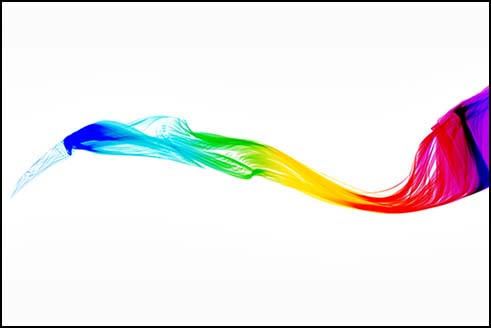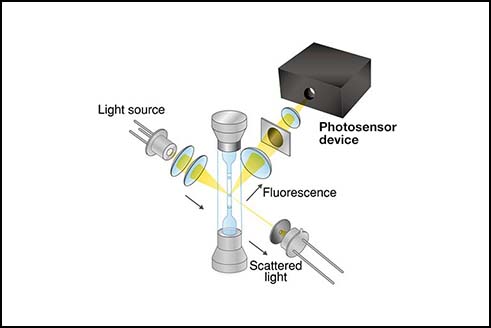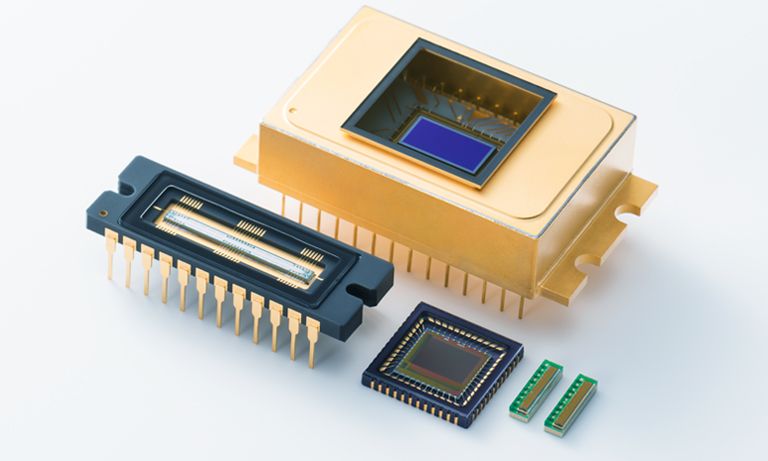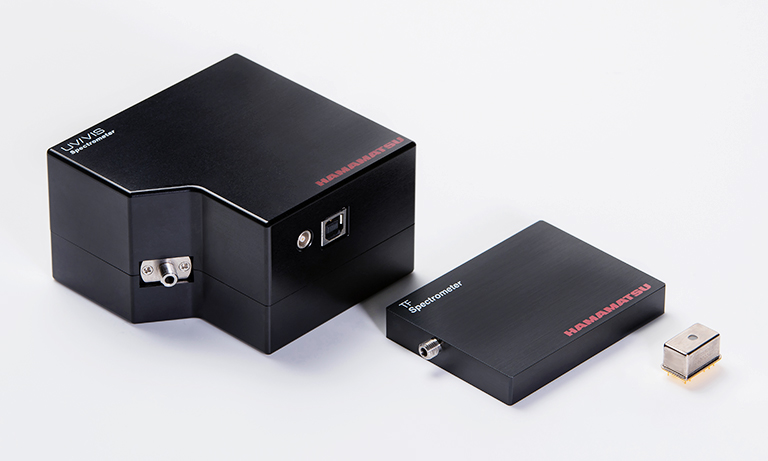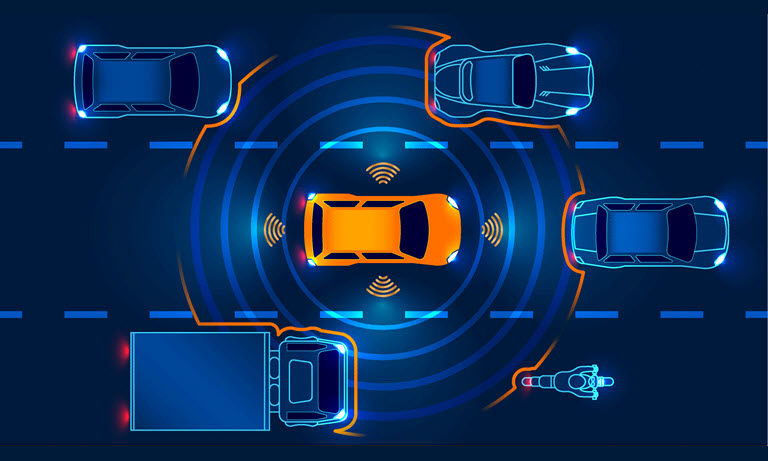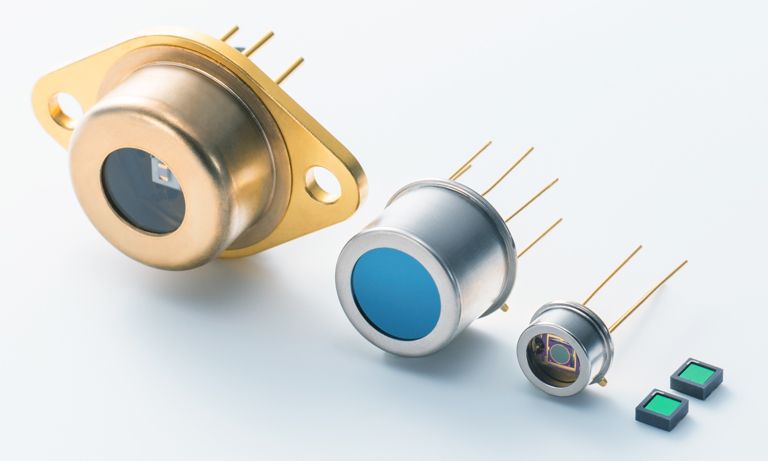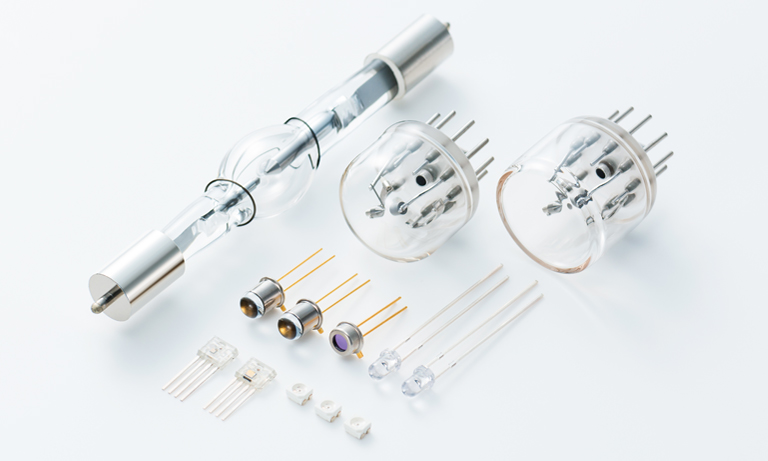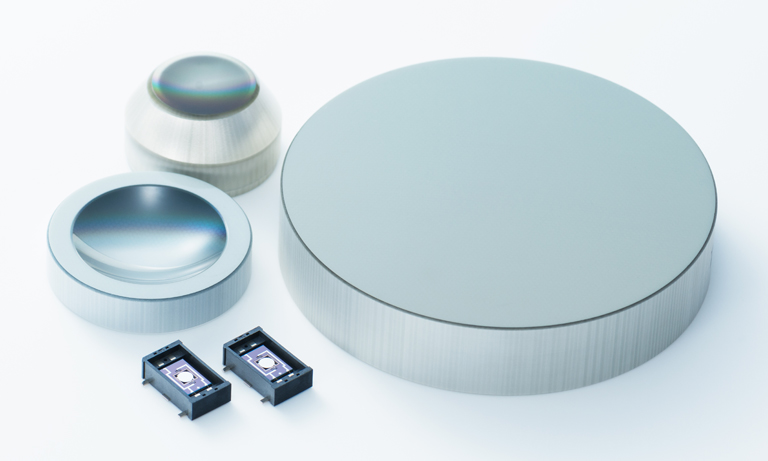Application notes
Technical notes
Ask an engineer
Publications
United States (EN)
Select your region or country.
APD Questions & Answers
What is excess noise in APDs?
Excess noise is the additional noise created by a detector with gain. A detector with excess noise of 1 means that the intrinsic noise is multiplied by 1—therefore, the noise is not made any worse—but any value over 1 means the noise is increased due to the gain. The magnitude of excess noise can be measured by back calculating from the anode output current the equivalent average and standard deviation of incident flux. By using a sufficiently high intensity of incident light, we can fairly assume that the photon shot noise is the primary source of noise; therefore, without excess noise, the standard deviation of incident flux should be equal to the square root of the average incident flux, i.e., the photon shot noise. The fraction of the standard deviation of incident flux above photon shot noise is the excess noise.
APDs have a specification called excess noise figure. What does it mean?
Excess noise figure, also called excess noise index, is a value that can be used to estimate excess noise. The formula for calculating excess noise from the excess noise figure is gain raised to the excess noise figure. Excess noise figure is an empirically measured value that allows the sensor’s user to estimate the excess noise at a given voltage or gain setting. The excess noise figure is determined by sweeping the gain setting then measuring the excess noise. The excess noise figure is then determined to generate a linear slope that approximates the slope of the excess noise vs. gain plot.
What is the typical excess noise of Si APDs?
Si APDs’ excess noise is typically between 2 and 6. This is much higher than other detectors like PMTs (between 1.2 and 1.3) and MPPCs/SiPMs (between 1.1 and 1.2). One of the reasons why Si APDs’ excess noise values are relatively high is the ability for both electrons and holes to cause impact ionization with varied efficiency.
Why does the excess noise change depending on the wavelength?
The absorption depth of the photon varies depending on the wavelength, with shorter wavelengths absorbed closer to the front surface. Where the photon is absorbed and the avalanche is initiated affects how the carrier multiplication progresses in the avalanche region. The charge carriers must also traverse a minimum distance to generate sufficient kinetic energy to initiate impact ionization. As a result, the stability of the avalanche multiplication depends on the location where the first charge carrier is generated.
If you have a technical question you’d like to see answered on this page, email us.
Meet the engineer

Dino Butron is an Applications Engineer, specializing in all of our point detectors and signal-to-noise simulations. In his spare time, Dino enjoys spending time with his wife and daughter, as well as taking on home improvement projects.
- Confirmation
-
It looks like you're in the . If this is not your location, please select the correct region or country below.
You're headed to Hamamatsu Photonics website for US (English). If you want to view an other country's site, the optimized information will be provided by selecting options below.
In order to use this website comfortably, we use cookies. For cookie details please see our cookie policy.
- Cookie Policy
-
This website or its third-party tools use cookies, which are necessary to its functioning and required to achieve the purposes illustrated in this cookie policy. By closing the cookie warning banner, scrolling the page, clicking a link or continuing to browse otherwise, you agree to the use of cookies.
Hamamatsu uses cookies in order to enhance your experience on our website and ensure that our website functions.
You can visit this page at any time to learn more about cookies, get the most up to date information on how we use cookies and manage your cookie settings. We will not use cookies for any purpose other than the ones stated, but please note that we reserve the right to update our cookies.
1. What are cookies?
For modern websites to work according to visitor’s expectations, they need to collect certain basic information about visitors. To do this, a site will create small text files which are placed on visitor’s devices (computer or mobile) - these files are known as cookies when you access a website. Cookies are used in order to make websites function and work efficiently. Cookies are uniquely assigned to each visitor and can only be read by a web server in the domain that issued the cookie to the visitor. Cookies cannot be used to run programs or deliver viruses to a visitor’s device.
Cookies do various jobs which make the visitor’s experience of the internet much smoother and more interactive. For instance, cookies are used to remember the visitor’s preferences on sites they visit often, to remember language preference and to help navigate between pages more efficiently. Much, though not all, of the data collected is anonymous, though some of it is designed to detect browsing patterns and approximate geographical location to improve the visitor experience.
Certain type of cookies may require the data subject’s consent before storing them on the computer.
2. What are the different types of cookies?
This website uses two types of cookies:
- First party cookies. For our website, the first party cookies are controlled and maintained by Hamamatsu. No other parties have access to these cookies.
- Third party cookies. These cookies are implemented by organizations outside Hamamatsu. We do not have access to the data in these cookies, but we use these cookies to improve the overall website experience.
3. How do we use cookies?
This website uses cookies for following purposes:
- Certain cookies are necessary for our website to function. These are strictly necessary cookies and are required to enable website access, support navigation or provide relevant content. These cookies direct you to the correct region or country, and support security and ecommerce. Strictly necessary cookies also enforce your privacy preferences. Without these strictly necessary cookies, much of our website will not function.
- Analytics cookies are used to track website usage. This data enables us to improve our website usability, performance and website administration. In our analytics cookies, we do not store any personal identifying information.
- Functionality cookies. These are used to recognize you when you return to our website. This enables us to personalize our content for you, greet you by name and remember your preferences (for example, your choice of language or region).
- These cookies record your visit to our website, the pages you have visited and the links you have followed. We will use this information to make our website and the advertising displayed on it more relevant to your interests. We may also share this information with third parties for this purpose.
Cookies help us help you. Through the use of cookies, we learn what is important to our visitors and we develop and enhance website content and functionality to support your experience. Much of our website can be accessed if cookies are disabled, however certain website functions may not work. And, we believe your current and future visits will be enhanced if cookies are enabled.
4. Which cookies do we use?
There are two ways to manage cookie preferences.
- You can set your cookie preferences on your device or in your browser.
- You can set your cookie preferences at the website level.
If you don’t want to receive cookies, you can modify your browser so that it notifies you when cookies are sent to it or you can refuse cookies altogether. You can also delete cookies that have already been set.
If you wish to restrict or block web browser cookies which are set on your device then you can do this through your browser settings; the Help function within your browser should tell you how. Alternatively, you may wish to visit www.aboutcookies.org, which contains comprehensive information on how to do this on a wide variety of desktop browsers.
5. What are Internet tags and how do we use them with cookies?
Occasionally, we may use internet tags (also known as action tags, single-pixel GIFs, clear GIFs, invisible GIFs and 1-by-1 GIFs) at this site and may deploy these tags/cookies through a third-party advertising partner or a web analytical service partner which may be located and store the respective information (including your IP-address) in a foreign country. These tags/cookies are placed on both online advertisements that bring users to this site and on different pages of this site. We use this technology to measure the visitors' responses to our sites and the effectiveness of our advertising campaigns (including how many times a page is opened and which information is consulted) as well as to evaluate your use of this website. The third-party partner or the web analytical service partner may be able to collect data about visitors to our and other sites because of these internet tags/cookies, may compose reports regarding the website’s activity for us and may provide further services which are related to the use of the website and the internet. They may provide such information to other parties if there is a legal requirement that they do so, or if they hire the other parties to process information on their behalf.
If you would like more information about web tags and cookies associated with on-line advertising or to opt-out of third-party collection of this information, please visit the Network Advertising Initiative website http://www.networkadvertising.org.
6. Analytics and Advertisement Cookies
We use third-party cookies (such as Google Analytics) to track visitors on our website, to get reports about how visitors use the website and to inform, optimize and serve ads based on someone's past visits to our website.
You may opt-out of Google Analytics cookies by the websites provided by Google:
https://tools.google.com/dlpage/gaoptout?hl=en
As provided in this Privacy Policy (Article 5), you can learn more about opt-out cookies by the website provided by Network Advertising Initiative:
http://www.networkadvertising.org
We inform you that in such case you will not be able to wholly use all functions of our website.
Close

